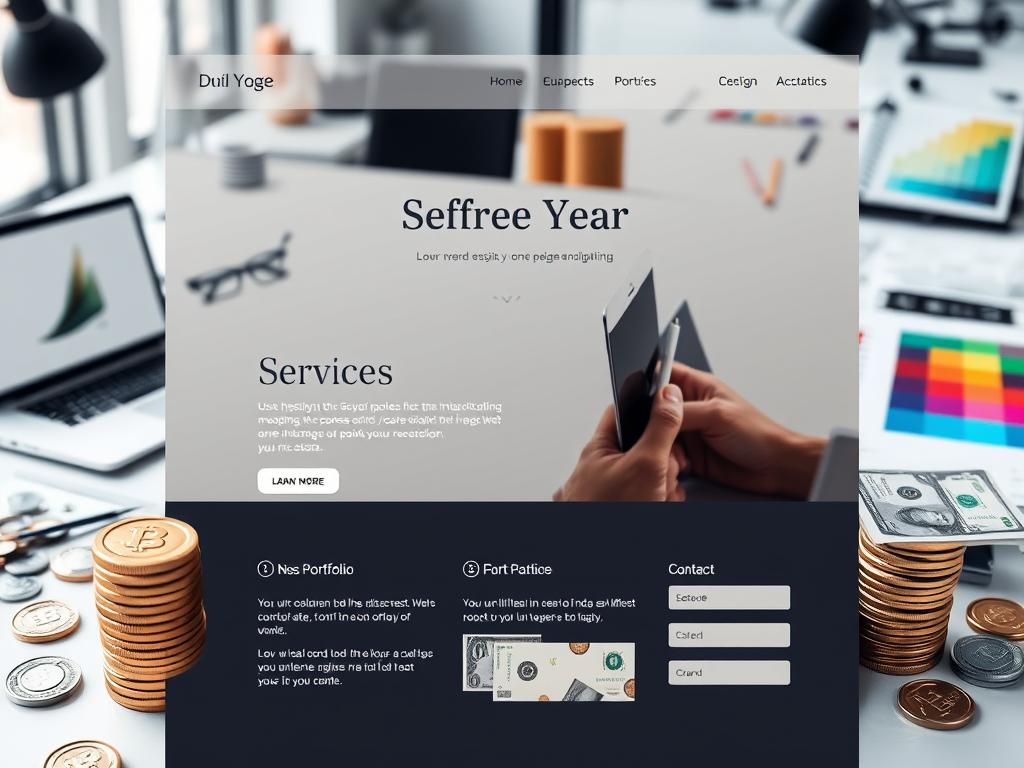In the rapidly evolving environment of digital design, certain web design agencies distinguish themselves through their innovative approaches and commitment to user-centric solutions. With firms like Momentum and Bop Design leading the charge, it's crucial to assess how these agencies modify to emerging trends such as mobile-first strategies and AI integration. Their ability to drive engagement and measurable outcomes positions them as key players in the industry. Yet, as competition intensifies, one must consider what sets these agencies apart in a market increasingly defined by digital transformation.
Overview of Top Agencies
When considering the domain of web design, it's essential to identify the agencies that stand out for their specialized knowledge and proven success.
Agencies such as Momentum and Bop Design have built strong agency reputations, consistently delivering exceptional results across various sectors. Client testimonials highlight their ability to improve user experiences and drive business growth.
For instance, Momentum has been acknowledged as the top UX agency by Clutch.co for seven consecutive years, while Bop Design boasts a perfect score of 5.0/5 stars, demonstrating their commitment to excellence.
Specializations of Design Firms
In the competitive arena of web design, grasping the unique specializations of design firms is essential for businesses seeking tailored solutions to their digital needs.
Agencies like Momentum excel in user experience design, ensuring seamless interactions that drive user engagement.
Meanwhile, firms such as LLT Group focus on branding strategies, crafting distinctive identities that connect with target audiences.
For businesses aiming at B2B interactions, Bop Design delivers custom experiences tailored to industry requirements.
Additionally, Tiny Frog Technologies specializes in WordPress solutions, providing technical knowledge for ideal site performance.
Importance of Effective Design
Effective design serves as the cornerstone of successful digital experiences, fundamentally shaping how users interact with a brand.
In today's fast-paced online environment, user experience is crucial; it dictates not only initial impressions but also long-term engagement and loyalty. A harmonious blend of visual aesthetics and functionality creates compelling interfaces that captivate and retain users.
Innovative design transcends mere decoration; it strategically improves usability, ensuring that every interaction is intuitive and enjoyable. By prioritizing effective design, businesses enable users to navigate seamlessly while nurturing a connection that connects on an emotional level.
Ultimately, investing in thoughtful design is not just about appearance; it's about crafting a transformative experience that champions freedom of exploration and interaction.
Upcoming Design Trends
As the digital environment evolves, design trends are set to shift dramatically, driven by the need for more engaging and personalized user experiences.
Mobile-first design will dominate, ensuring ideal functionality across devices, while immersive technologies like AR and VR will redefine user interactions, creating enchanting experiences.
Additionally, AI integration will enable tailored content delivery, enhancing user engagement and satisfaction.
In response to growing environmental concerns, sustainable practices will become critical, guiding agencies to create eco-friendly designs that connect with socially conscious consumers.
These trends reflect a commitment to innovation and user-centric approaches, equipping businesses to thrive in an ever-changing digital terrain while nurturing a sense of freedom and connection among users.
User Research Insights
How can comprehension of user behavior fundamentally transform design outcomes? By employing diverse user research methods, designers can uncover priceless revelations that directly inform and improve the user experience.
Techniques such as surveys, interviews, and usability testing allow agencies to collect user feedback analysis, revealing pain points and preferences essential for creating intuitive interfaces.
This data-driven approach not only cultivates empathy for the user but also enables teams to make informed design decisions that connect with their target audience.
As web design evolves, prioritizing user research guarantees that agencies remain agile and responsive, ultimately crafting digital experiences that embody freedom, accessibility, and satisfaction.
Emphasizing user-centric strategies is key to steering through the complexities of modern design challenges.
Digital Transformation Strategies
In today's rapidly evolving digital environment, organizations must identify that a robust digital transformation strategy is not merely an option but a necessity for sustained growth and competitiveness.
Embracing digital innovation is critical, as it enables businesses to harness emerging technologies and improve their operational efficiencies. This journey involves a thorough approach to technology adoption, ensuring that every aspect of the organization, from customer engagement to internal processes, is optimized for a digital-first future.
By cultivating a culture of agility and flexibility, companies can better respond to shifting market demands and client expectations.
Ultimately, an effective digital transformation strategy equips organizations to not only survive but thrive in a setting where innovation and user-centric solutions define success.
Metrics for Success
Measuring success in web design is critical for ensuring that projects meet their intended goals and deliver maximum value to clients. To assess design effectiveness, agencies utilize a range of performance indicators, such as conversion rates, user engagement metrics, and retention statistics.
Advanced analytics tools track user interactions, enabling agencies to identify patterns and optimize the user experience. A/B testing further refines design choices by empirically validating which variations connect best with users.
Additionally, gathering customer feedback through surveys provides qualitative understandings that improve comprehension of user satisfaction. By continuously monitoring these metrics, agencies can pivot strategies, ensuring that each design not only captivates but also drives tangible business outcomes, enabling clients to thrive in a competitive environment.
Future of Design Agencies
The future of design agencies is poised for considerable transformation as they embrace agile methodologies and prioritize collaboration with technology partners to refine service options. This agency evolution is fueled by a commitment to design innovation and a user-centric approach, ensuring that client needs are met with precision.
| Trends | Impact on Agencies | Focus Areas |
|---|---|---|
| Agile Methodologies | Faster project delivery | Flexibility in design |
| Tech Partnerships | Improved service options | Cutting-edge solutions |
| Sustainable Design | Eco-friendly practices | Social responsibility |
| Remote Work | Global talent acquisition | Diverse skill sets |
| Continuous Learning | Adjustment to new technologies | Innovation in strategies |
As design agencies navigate this environment, their ability to adjust will define their success, creating opportunities for freedom and creativity in digital experiences.
Frequently Asked Questions
How Do I Choose the Right Agency for My Project?
To choose the right agency, conduct a thorough agency portfolio evaluation and clearly define your project scope. Prioritize agencies with proficiency relevant to your needs, ensuring their innovative approach aligns with your vision for success.
What Is the Typical Budget for Hiring a Web Design Agency?
The typical budget for hiring a web design agency varies considerably, with average costs ranging from $5,000 to $50,000, depending on project scope, intricacy, and the agency's proficiency in delivering user-focused solutions.
How Long Does a Web Design Project Usually Take?
Web design project timelines typically range from several weeks to months, depending on intricacy. Key design phases—research, prototyping, and testing—are essential for delivering user-focused solutions that meet client expectations and improve overall experience.
Can Agencies Help With Ongoing Website Maintenance?
Indeed, agencies excel in providing ongoing website maintenance, ensuring timely website updates and reliable client support. This proactive approach not only improves user experience but also allows businesses the freedom to focus on growth and innovation.
What Industries Do These Agencies Typically Serve?
Web design agencies typically serve diverse industries, including e-commerce solutions, healthcare websites, nonprofit organizations, tech startups, educational platforms, and the travel industry, ensuring tailored, user-focused designs that improve engagement and drive results across various sectors.








